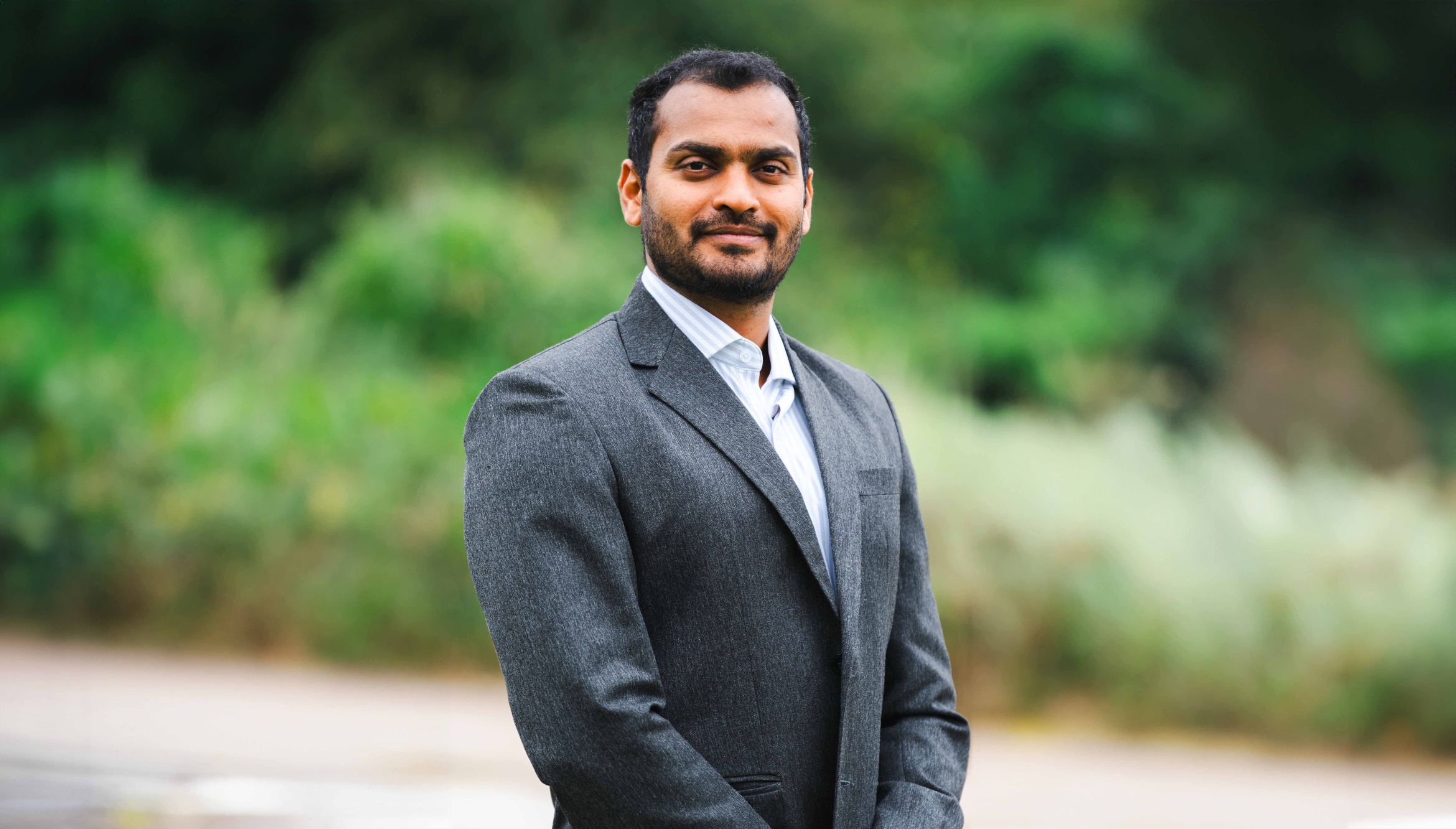
With the clock winding down on his doctoral degree, Satish Kumar scores a prestigious research fellowship
As he prepares to officially receive his Ph.D. in electrical and computer engineering from UC Santa Barbara, Satish Kumar is already celebrating. He has just been named a Schmidt Science Fellow, a prestigious honor that comes with a year of training in science leadership rogram and funding for a one- to two-year research placement at an institution still to be determined. Kumar is the university’s first College of Engineering graduate student to receive a Schmidt fellowship. The 2024 cohort includes 32 members from 26 institutions worldwide.
“I was shocked, and it took a few days for me to process what this could mean for my future,” said Kumar, noting that the fellowship eliminated the biggest constraint for most postdoctoral researchers: funding. “The greatest benefit of being a Schmidt Science Fellow is that I can pursue high-risk research that typically would not be financially supported because the project is completely exploratory.”
Eric and Wendy Schmidt launched the Schmidt Science Fellows Program in 2018 to help researchers expand their work across areas of study and build a community of interdisciplinary thinkers dedicated to solving the world’s biggest challenges.
“It’s at the edges of things — ecosystems, borders, disciplines — when the most interesting ideas are developed, solutions that don’t arise from any single approach,” said Wendy Schmidt in announcing the 2024 cohort.
Kumar has already experienced the benefits of interdisciplinary research, thriving as a graduate researcher in UCSB’s collaborative culture. Advised by B.S. Manjunath, professor and chair of the ECE Department, Kumar designs novel algorithms for large-scale solutions, focusing on computer vision (CV) and machine learning. He and his colleagues developed MethaneMapper, an artificial intelligence (AI)-powered hyperspectral imaging tool that detects real-time methane emissions and traces them to their sources. The tool works by processing hyperspectral data gathered during airborne scans of the target area. The project united nine prominent research groups worldwide, including scientists at NASA’s Jet Propulsion Laboratory, Harvard, and Stanford. The interdisciplinary endeavor resulted in a published paper, in which Kumar was listed as the lead author, that was eventually recognized as a “Special Highlight,” an honor given to only the top 2.5 percent of submissions at the 2023 Computer Vision and Pattern Recognition (CVPR) Conference, one of the top CV conferences in the world. Kumar also spearheaded collaborations with the Smithsonian Institute to develop WildlifeMapper, a project designed to create new detection and tracking methods for studying animal movement patterns in the wild.
“His work on methane detection led to the creation of the largest publicly available dataset of hyperspectral imagery, which is accessible through the UCSB BisQue platform,” said Manjunath. “His experience in a diverse array of interdisciplinary research projects, his enthusiasm, and his commitment align perfectly with the goals of those award the Schmidt Fellowships.”
As a 2024 Schmidt Fellow, Kumar will examine whether plants can serve as bioindicators to detect and mitigate global pollution. Researchers in Japan are currently studying what happens internally after the pigments of mosses and lichens change because of environmental stress associated with climate change, said Kumar. He will take a different approach, using novel CV algorithms to determine how plants respond to pollutants by using aerial and satellite imagery to monitor how their spectral properties change.
“I will start with moss and lichens because they are available in clusters, they are visible from aerial and satellite imagery,” said Kumar, who completed his undergraduate studies at the National Institute of Technology, Kurukshetra, a state in north-central India. “I plan to collaborate with people who are already working in this field. They can bring their expertise to the table, as will I as an engineer, and we can solve this problem together.”
In addition to being interdisciplinary, Kumar’s research projects have another common trait: they are spurred by his desire to detect and mitigate global pollution to improve the world. The goal of MethaneMapper was to detect methane emission sources, a top global priority since the U.S. Environmental Protection Agency reported methane was over 80 times more potent than carbon dioxide for trapping heat. Kumar’s work with the Smithsonian Institute and collaborators in Kenya on WildlifeMapper led to the development of more effective conservation strategies to protect wildlife. His Schmidt-supported project represents the next phase in his research.
“If we can track spectral changes, then maybe we can find a way to mitigate the pollution before it gets worse and becomes irreversible,” said Kumar, who also runs his own company, EyeClimate, using AI and data analysis to find solutions for fighting climate change. (EyeClimate won UCSB’s 2024 New Venture Competition.) “This interdisciplinary project represents another opportunity for me to effect change.”
Sonia Fernandez
Senior Science Writer
(805) 893-4765
sonia.fernandez@ucsb.edu



